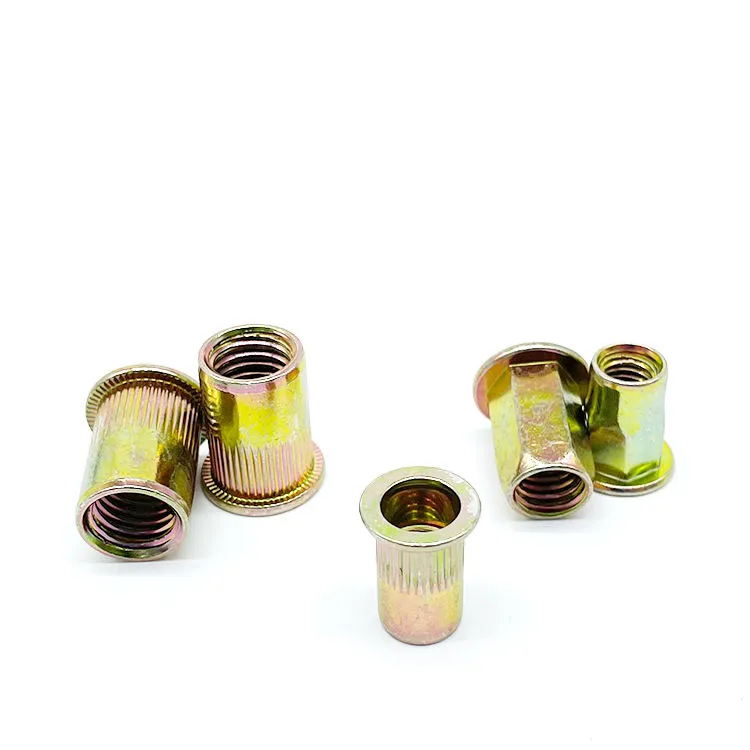

Understanding the Differences Between Flat Washers and Spring Washers in Fastening Applications
আগস্ট . 21, 2024 07:04 Back to list
Understanding the Differences Between Flat Washers and Spring Washers in Fastening Applications
Understanding Flat Washers and Spring Washers Functions and Applications
In the world of mechanical engineering and assembly, washers play a crucial role in ensuring the integrity and durability of connections. Among the various types of washers, flat washers and spring washers stand out due to their distinct functions and applications. This article will delve into the characteristics of each type, their uses, and the scenarios in which they are best utilized.
Flat Washers
Flat washers are thin, disk-shaped components made from various materials such as metal, plastic, or rubber. Their primary function is to distribute the load of a threaded fastener, such as a bolt or a nut. By spreading the load over a larger surface area, flat washers help prevent damage to the materials being joined and reduce the risk of the fastener loosening over time.
Flat washers are ubiquitous in the construction, automotive, and manufacturing industries. They are available in different diameters and thicknesses to accommodate various fastener sizes and to match the specific requirements of different applications. For example, larger flat washers are often used in heavy machinery where immense forces are at play, while smaller washers may be found in electronics and household items.
In addition to load distribution, flat washers can serve as spacers, providing a gap between surfaces
. This application is particularly useful in electrical assemblies where maintaining a specific distance between components is essential to prevent shorts or to ensure proper functioning.Spring Washers
flat washer spring washer

Spring washers, on the other hand, are designed to provide a compressive force that maintains tension within the fastened joint. They are typically made from spring steel and are characterized by their curved shape, which allows them to compress and expand as needed. The most common types of spring washers include split washers (also known as lock washers) and wave washers.
The primary function of spring washers is to absorb shock and vibration, effectively preventing loosening caused by dynamic loads. This feature makes them particularly valuable in applications where there is constant movement, such as in automotive engines or rotating machinery. By providing a continuous force against the fastener, spring washers help maintain the integrity of the joint even under harsh conditions.
Spring washers can also provide locking capabilities. When used alongside bolts and nuts, they create a mechanical lock that resists the tendency of fasteners to loosen due to vibration and movement. This is especially critical in high-stakes applications such as aerospace and heavy machinery, where failure of a connection can lead to catastrophic consequences.
Choosing the Right Washer
When selecting between flat washers and spring washers, it is vital to consider the specific needs of your application. Flat washers are suitable for load distribution and spacing, while spring washers are essential for tension maintenance and vibration resistance. In many cases, a combination of the two may be employed to achieve the best results, such as using a flat washer under a nut to distribute load while also incorporating a spring washer to prevent loosening.
In conclusion, understanding the roles of flat and spring washers is essential for ensuring the reliability and longevity of mechanical assemblies. Both types of washers offer unique benefits that make them integral to various industries, from automotive to aerospace. By choosing the appropriate washer for the job, engineers and assemblers can enhance performance, safety, and efficiency in their projects.
Latest news
-
High-Strength Hot Dip Galvanized Bolts - LongZe | Corrosion Resistance, Custom Sizes
NewsAug.01,2025
-
Best Self Tapping Screws for Drywall - Fast & Secure Installation
NewsJul.31,2025
-
High-Strength Hot Dip Galvanized Bolts-Hebei Longze|Corrosion Resistance&Customization
NewsJul.31,2025
-
Hot Dip Galvanized Bolts-Hebei Longze Metal Products|Corrosion Resistance&High Strength
NewsJul.31,2025
-
Hot Dip Galvanized Bolts-About LongZe|High Strength, Corrosion Resistance
NewsJul.30,2025
-
High-Strength Hot Dip Galvanized Bolts - Hebei Longze | Corrosion Resistance, Customization
NewsJul.30,2025

